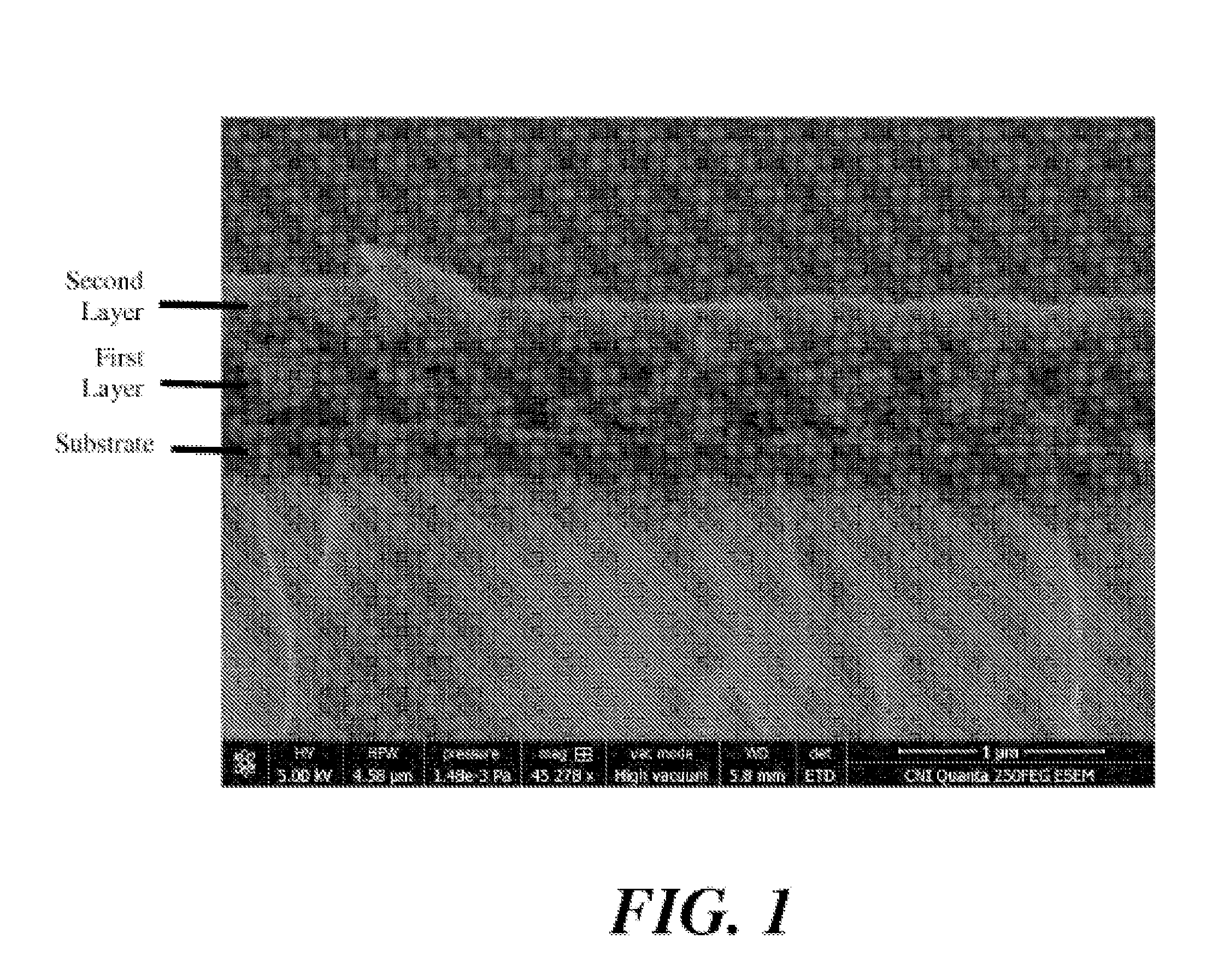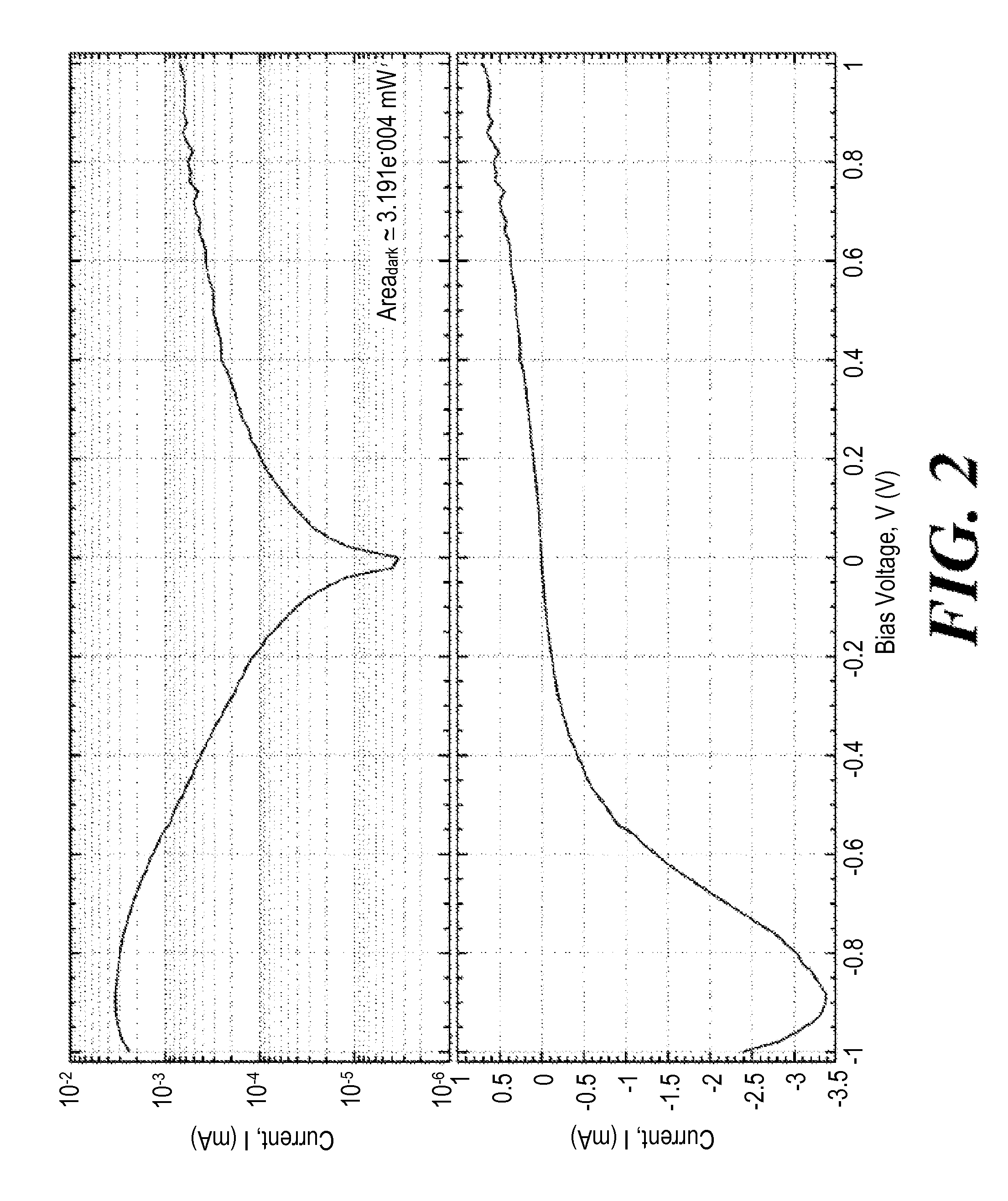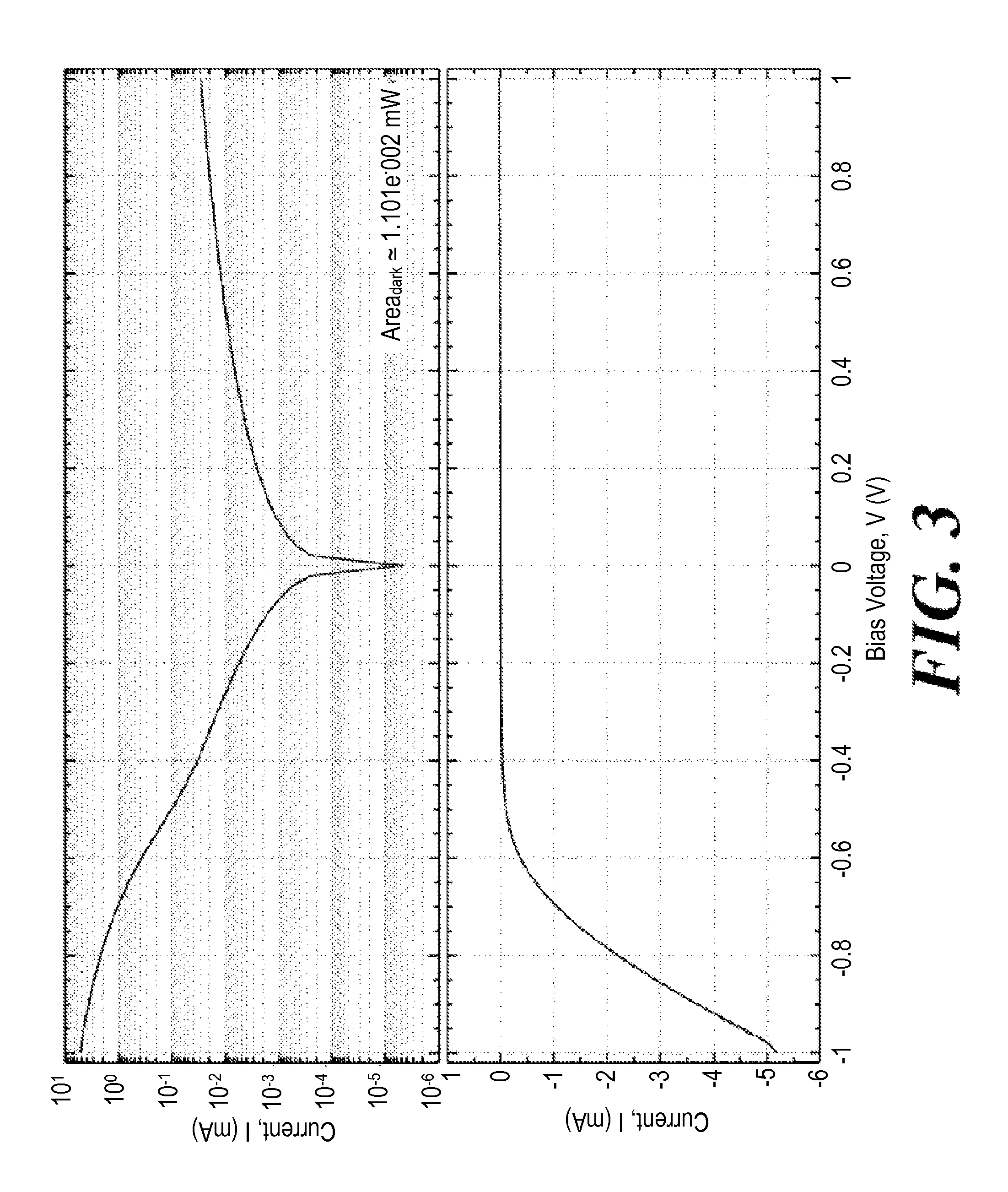Multi-layer mesoporous coatings for conductive surfaces, and methods of preparing thereof
a technology of conductive surfaces and mesoporous coatings, which is applied in the field of two-layer mesoporous coatings, can solve the problems of limited manufacturing to high-cost batch processes that compete with silicon-based solar cells, short operation life of dssc cells, and increased manufacturing costs of photovoltaic cells. , to achieve the effect of efficient charge transport and mechanical robustness
- Summary
- Abstract
- Description
- Claims
- Application Information
AI Technical Summary
Benefits of technology
Problems solved by technology
Method used
Image
Examples
embodiment 1
2. The method of embodiment 1, wherein the ratio of the amount of first photocatalytic particles to the amount of polymeric binder present in the first photocatalytic dispersion is 0.36 to 0.65.
embodiment 2
3. The method of embodiment 2, wherein the ratio of the amount of first photocatalytic particles to the amount of polymeric binder present in the first photocatalytic dispersion is 0.38 to 0.42.
4. The method of any one of embodiments 1 to 3, wherein at least 30% of each first photocatalytic particle in the porous first layer is coated with the polymeric binder.
5. The method of any one of embodiments 1 to 4, wherein the conductive surface is an indium tin oxide or fluorinated tin oxide surface.
6. The method of any one of embodiments 1 to 5, wherein the multi-layered mesoporous structure is a two-layered mesoporous structure.
7. The method of any one of embodiments 1 to 6, wherein the first photocatalytic particles and the photocatalytic particles are each independently semiconductive oxide particles.
embodiment 4
8. The method of embodiment 4, wherein the first photocatalytic particles and the second photocatalytic particles are each independently titanium dioxide particles, zirconium dioxide particles, zinc oxide particles, or any combination thereof.
9. The method of any one of embodiments 1 to 8, wherein the average particle size of the plurality of second photocatalytic particles is less than the average particle size of the plurality of first photocatalytic particles.
10. The method of any one of embodiments 1 to 8, wherein the plurality of first photocatalytic particles has an average particle size between 8 nm and 10 nm.
11. The method of any one of embodiments 1 to 8, wherein the plurality of first photocatalytic particles has an average particle size between 10 nm and 250 nm.
PUM
| Property | Measurement | Unit |
|---|---|---|
| temperature | aaaaa | aaaaa |
| particle size | aaaaa | aaaaa |
| particle size | aaaaa | aaaaa |
Abstract
Description
Claims
Application Information
 Login to View More
Login to View More - R&D
- Intellectual Property
- Life Sciences
- Materials
- Tech Scout
- Unparalleled Data Quality
- Higher Quality Content
- 60% Fewer Hallucinations
Browse by: Latest US Patents, China's latest patents, Technical Efficacy Thesaurus, Application Domain, Technology Topic, Popular Technical Reports.
© 2025 PatSnap. All rights reserved.Legal|Privacy policy|Modern Slavery Act Transparency Statement|Sitemap|About US| Contact US: help@patsnap.com



